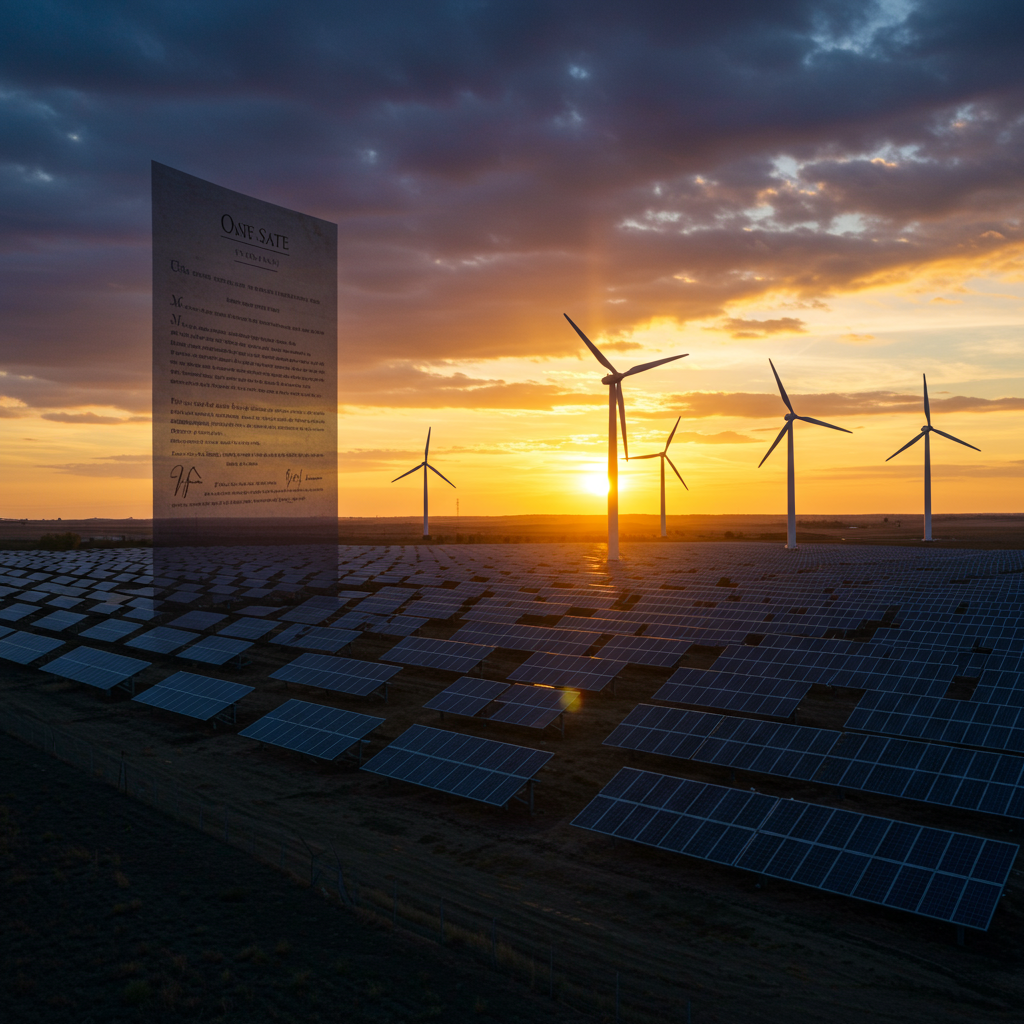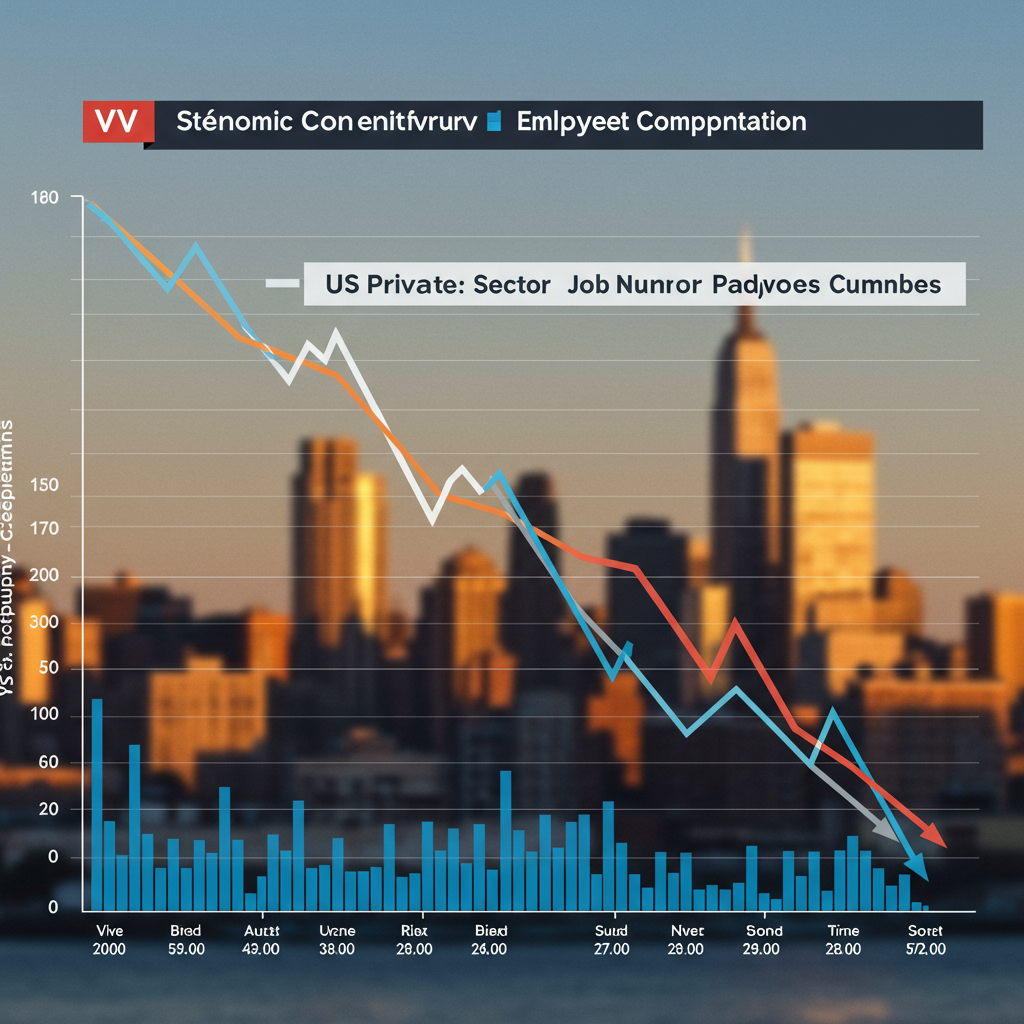A significant legislative battle is unfolding in the United States, with a major spending bill passed by Senate Republicans posing a substantial threat to the future of renewable energy projects nationwide. This bill, now moving to the House of Representatives, contains provisions that clean energy advocates and industry experts warn could severely hinder the growth of solar and wind power, potentially leading to increased energy costs, job losses, and challenges for grid reliability at a time of rising electricity demand. While the Senate version narrowly avoided a highly punitive excise tax on renewables, critics argue that other measures embedded in the text could still be devastating for clean energy development.
A Looming Threat to Clean Energy Development
The bill, dubbed the “One Big Beautiful Bill Act,” represents a key legislative priority for former President Donald Trump and aims to roll back many of the clean energy initiatives established under the Biden administration, particularly those within the 2022 Inflation Reduction Act (IRA). The IRA expanded tax credits designed to incentivize the deployment of carbon-pollution-free energy sources like solar and wind. However, the new Senate bill introduces strict requirements that could make it incredibly difficult for many projects to qualify for these crucial incentives.
One of the most impactful changes is the imposition of aggressive timelines for projects seeking IRA tax credits. Under the Senate bill’s language, solar and wind projects would generally need to either begin construction within one year of the bill’s enactment or be operational (“placed in service”) by the end of 2027 (or 2028, depending on interpretation of varying source details) to receive the credits. Industry experts widely regard this timeline as unrealistic for many utility-scale projects, which typically require years to secure financing, obtain necessary permits, and navigate the complex process of connecting to the power grid. Forcing projects onto such a truncated schedule could effectively render the tax credits inaccessible for a significant portion of planned developments.
Beyond these timeline restrictions, the bill also includes provisions detrimental to broader clean energy and climate efforts. Sources indicate the bill seeks to eliminate or scale back energy efficiency programs, reduce protections for public lands that could be used for renewable projects, and wind down tax credits for electric vehicles and associated manufacturing.
The Excise Tax Debate and Political Tensions
Earlier versions or proposals related to the bill included a controversial excise tax specifically targeting solar and wind projects based on the foreign origin of their components. This tax would have penalized developers who used materials or equipment from countries deemed “foreign entities of concern,” primarily China, which currently dominates global supply chains for solar panels and wind turbines. Critics warned this tax was not only punitive but also potentially unworkable given the current state of global manufacturing, threatening to add significant costs (potentially 10-20% to project budgets) and potentially halt projects entirely.
While reports suggest this particular excise tax was dropped in the final Senate text that passed, its inclusion in earlier discussions highlights the underlying hostility towards certain renewable technologies within the bill’s framework. Some advocates worry that proposing and then removing the tax may have served as a distraction from other damaging provisions, such as the restrictive timelines for tax credits, which remain in the bill.
Adding complexity to the political landscape, many existing and planned wind and solar projects, along with factories benefiting from IRA incentives, are located in Republican-leaning districts. This creates a tension between national ideological opposition to wind and solar, often fueled by misleading claims, and the tangible economic benefits these projects bring to local constituents in the form of jobs and investment. Experts like Nat Keohane of C2ES note this push and pull between national rhetoric and local realities among GOP members.
Potential Economic and Grid Impacts
Opponents of the bill warn of severe negative consequences if its provisions are enacted. Analysis from groups like Energy Innovation predicts the bill could prevent the construction of hundreds of gigawatts of new clean energy capacity – potentially preventing 300 GW by 2035, compared to a total US grid capacity of around 1,200 GW in 2023. This reduction in deployment could significantly impact the U.S.’s ability to meet climate goals, such as the Paris Agreement commitment to halve greenhouse gas emissions by the end of the decade.
The economic fallout is projected to be substantial. The bill is feared to cause widespread job losses, with some union leaders estimating the cuts to energy incentives could eliminate around 1.75 million construction jobs nationwide, leading to billions in lost wages. Think tanks project the bill could cost the U.S. economy nearly a trillion dollars in cumulative GDP through 2034.
Furthermore, slashing incentives for clean energy could lead to higher energy costs for consumers. Analyses forecast potential increases in wholesale electricity prices, translating to hundreds of dollars per year in higher utility bills for American households by 2030 and beyond, with impacts felt particularly hard in states that have seen rapid clean energy growth.
These potential cuts come at a critical juncture. The United States is experiencing a surge in electricity demand for the first time in over a decade, driven by the expansion of AI data centers, domestic manufacturing, and the growth of the electric vehicle industry. Wind and solar are currently the fastest-growing sources of new electricity generation capacity and are seen as essential to meeting this demand relatively quickly, given the long lead times for other sources like new fossil fuel or nuclear plants. Hindering their development could strain the power grid, reducing reliability and exacerbating price increases.
Comparing Energy Sources and Political Motivations
The bill’s specific targeting of solar and wind, compared to other carbon-free sources like nuclear power which has received support from the Trump administration and some tech giants like Google and Microsoft, is seen by critics as politically motivated. Former President Trump has frequently expressed strong opposition to wind energy, often using misleading claims about its reliability and environmental impact – talking points that researchers have linked to disinformation campaigns. Secretary of Energy Chris Wright, a former oil and gas executive, has reportedly echoed similar sentiments.
While proponents of the bill argue that clean energy is now mature enough to compete without federal subsidies and emphasize the need for “reliable” traditional energy sources like coal, oil, and gas, opponents counter that rapidly growing electricity demand necessitates deploying all available sources, with wind and solar offering a rapid pathway for capacity addition. The bill also includes provisions that could benefit the fossil fuel industry, such as tax credits for metallurgical coal and expanded oil and gas leasing on public lands.
The debate over the bill highlights the ongoing partisan divide on energy policy, pitting clean energy advocates and many industry players against a segment of the Republican party keen to prioritize fossil fuels and reduce government spending on renewables, despite warnings about the potential negative consequences for jobs, costs, and energy security.
The Road Ahead
With the bill having passed the Senate, its fate now rests with the House of Representatives. The House previously passed its own version of a spending bill in May, and lawmakers in both chambers will need to reconcile the differences between the two texts. Clean energy advocates are continuing to push for changes to mitigate the bill’s potential harm, emphasizing the broad opposition from industry, unions, and consumer groups who warn the legislation could severely damage the U.S. economy and hinder its energy future.
Frequently Asked Questions
What specific provisions in the GOP spending bill threaten renewable energy?
The bill includes aggressive timelines for wind and solar projects to qualify for Inflation Reduction Act tax credits, requiring them to essentially start construction within a year or be operational by 2027/2028. It also aims to cut funding and credits for energy efficiency, electric vehicles, and may include restrictions related to supply chains or project financing for public/tribal entities. These measures make accessing incentives difficult and raise project costs.
How could this bill potentially affect American energy costs and jobs?
Opponents and analyses suggest the bill could significantly increase energy bills for households and businesses by hindering the deployment of lower-cost solar and wind projects. It is also projected to cause substantial job losses, potentially numbering over a million nationwide, particularly in construction and manufacturing sectors tied to the clean energy industry, by reducing investment and project development.
Why is the bill specifically targeting solar and wind power?
The bill’s focus on solar and wind is seen by critics as politically motivated, linked to opposition from former President Trump and alignment with the fossil fuel industry, which is also set to potentially benefit from other provisions in the bill. While proponents argue the goal is to cut subsidies for “unreliable” energy, advocates note that targeting solar and wind hinders the fastest-growing and often lowest-cost sources of new electricity capacity needed to meet rising demand.


